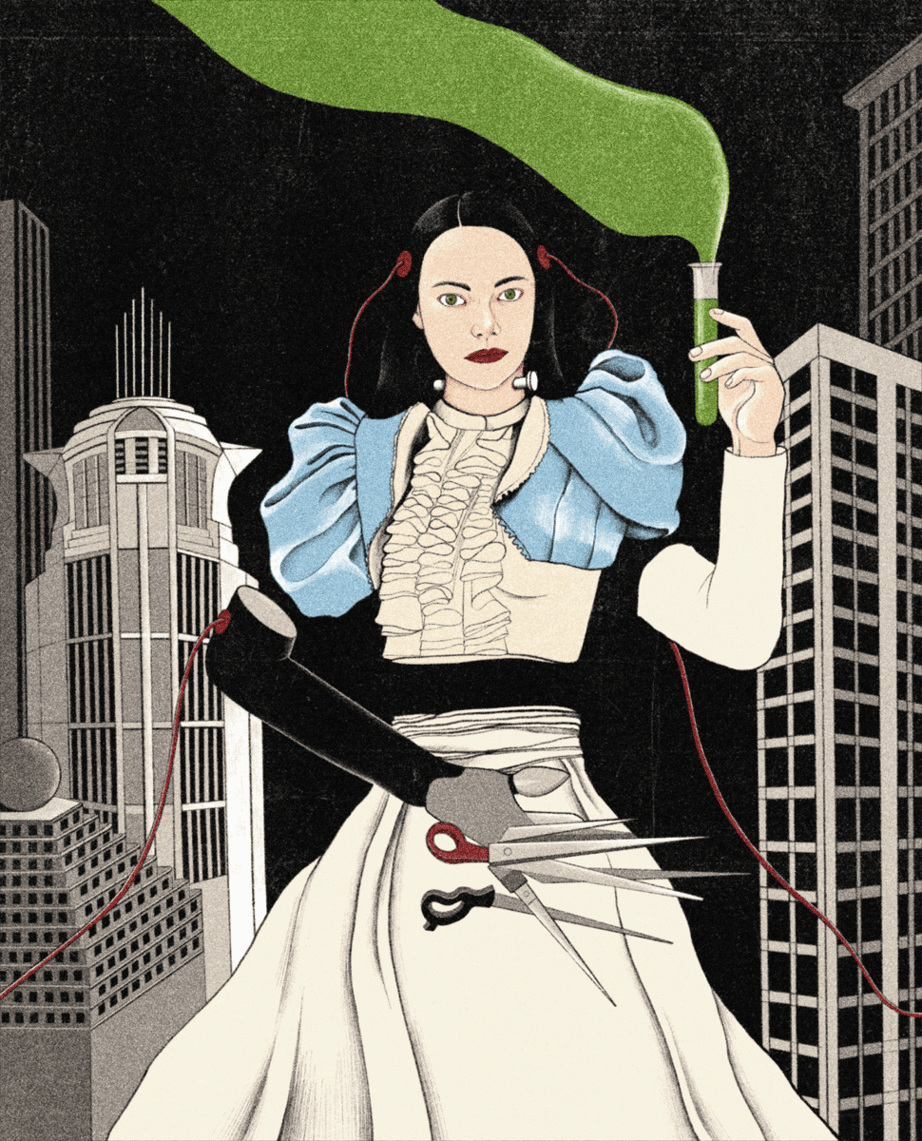American Gothic : FICTION : THE MANIKIN,<i> By Joanna Scott (Henry Holt: $22.50; 276 pp.)</i>
- Share via
When you want to be entertained and you hear that Darwinism is at a novel’s core, you might understandably move on to the next shelf. When the author is Joanna Scott, however, you are guaranteed horror and intrigue that makes even the brutal work of natural selection look tame. Who else but Scott would reveal what taxidermists do with cornmeal (a hint: no cooking required) or which household chemicals best preserve a cadaver? In her world, glass eyeballs are polished weekly along with the silverware. Aberrations, human and animal, inhabit a landscape that is both mesmerizing and appalling.
The setting for “The Manikin,” Scott’s fourth novel, is western New York state in 1927. The Manikin is the name of the mansion in which most of the action occurs, a name taken from taxidermy and referring to the forms that replace the skeleton of an animal about to be reconstructed. Such layers of meaning accumulate quickly in a novel in which everything from the title onward carries a portentous weight.
Henry Craxton Sr., “the Henry Ford of natural history,” is dead; the heyday of Craxton’s scientific establishment as a supplier to museums worldwide of everything from stuffed elephants to dioramas is passed.
Now only flea-bitten members of the collection and of the Craxton family remain, preserved by a staff that is reduced in every sense of the word. Decay is just where it should be in any self-respecting gothic novel--on the wind. Before you know it, harridans will cackle, virgins will be ruined and the “thing” in the shed will triumph.
“And so Ellen Griswood puts another day behind her,” the novel opens, “an ordinary day: The kitchen floor was scrubbed thoroughly, the bed linen washed, the clocks wound and antlers dusted and moose-hoof nut dishes wiped clean.” The sly humor is a Scott trademark, but one that becomes lamentably rare as the pages darken. A housekeeper in the true 19th century tradition, Ellen is servile, meticulous and easy prey for Craxton Jr. when he appears. Her one delight is a lovely, willful daughter, Peg, “who looks forward to the day when she’ll sleep between silk sheets on a canopy bed the size of Delaware.” Add a widowed groundskeeper and his rugged son, minor servants with names like Red Vic, a lunatic taxidermist, venomous old Mrs. Caxton, a cad and a scandalous flapper and the stage is set for murky action.
Scott painstakingly furnishes that stage, producing the kind of hyper-realism that contributes to “The Manikin’s” feverish, hermetically sealed atmosphere. She asks us to picture a tea party “as a museum diorama . . . so convincingly realistic, that it asks for your apology, as though history required an invitation and you had come without one.” This technique of pulling us back from the characters to get a more objective look contributes to a growing sense of menace in the novel’s early stages. Like a restless camera angle, it makes the reader jumpy and every creaking door hides a potential assailant.
Actors become mere specimens in this process. We examine the ladies of 1927 from a distance, admiring the accuracy of their reconstruction but feeling less for them than we do for the dead animals on the walls. Survivors here are the mere leftovers when nature--and its offshoot, society--have finished their work. That is precisely Scott’s intention and a key to her major preoccupation with the purposeless, mechanical business of Darwinism. “Forget the perfect System of Nature,” the prophetic taxidermist instructs. “Instead, wander through the carnival . . . meet the individuals--curiosities indeed, when you take them one by one!”
Admirers of Scott’s previous novels and short stories, whose subjects ranged from insanity and chloroform abuse to vivisection, will be at home with the morbid vision of “The Manikin.” Where others see a spilled dessert, Scott sees an eviscerated rabbit. If “The Manikin” is her version of “Animal Farm,” then the animals reclaiming their territory have to be long dead. The preoccupations here are similarly familiar: servility, disability, the violation of natural law and social order, but they cause narrative problems that did not arise in her earlier fiction.
”. . . The dense silence of a country house in winter crushes against the ears with the deafening pressure of many fathoms of water,” Scott writes. Both character and plot in “The Manikin” risk being similarly crushed by the weight of the author’s ideas. It is difficult to make human specimens engaging or to maintain a story’s urgency when the actors are diminished by their creator’s quirky objectivity.
Perhaps in an attempt to balance that perspective, Scott cedes the poetic high ground in “The Manikin” to nature and the downtrodden. Ellen “turns toward her weariness as she might toward the sun on the first warm day of spring.” In midwinter, “the cloud cover hung over the house like a cave’s granite ceiling” and snow is “like a white sheet pulled over a recently expired body.”
The compressed power of such descriptions alternates with an occasionally hysterical lyricism, at its most extreme when Peg flees the Manikin in a blizzard not just of snow but of self-consciousness, and when a baby is born in a forest clearing by moonlight: “The wind pants through the leaves in rhythm, the trees point their gnarled fingers, and the moon stares with the slack-jawed patience of an expert fisherman.” It is the kind of behavior that even Darwin would have found puzzling.
More to Read
Sign up for our Book Club newsletter
Get the latest news, events and more from the Los Angeles Times Book Club, and help us get L.A. reading and talking.
You may occasionally receive promotional content from the Los Angeles Times.






